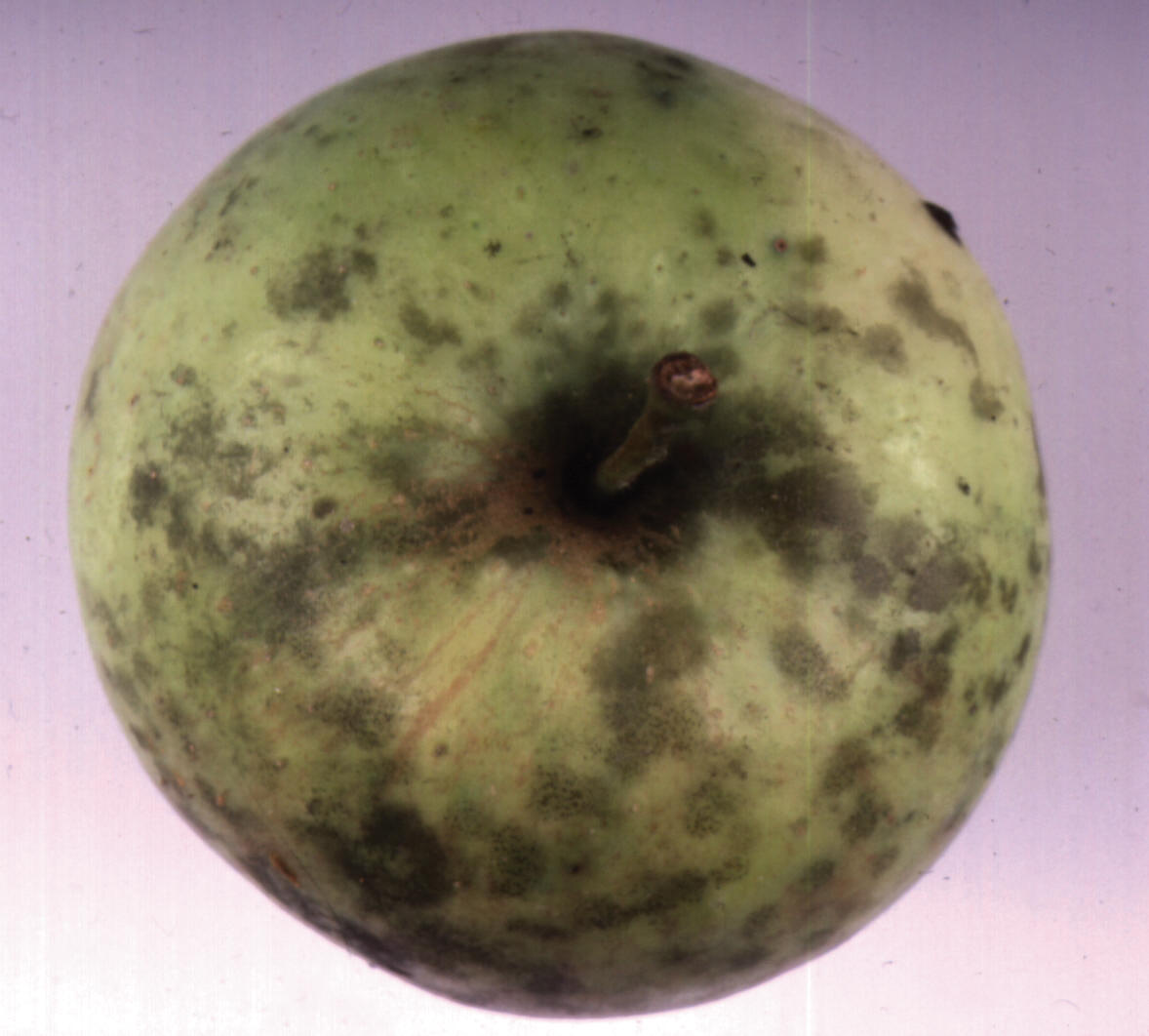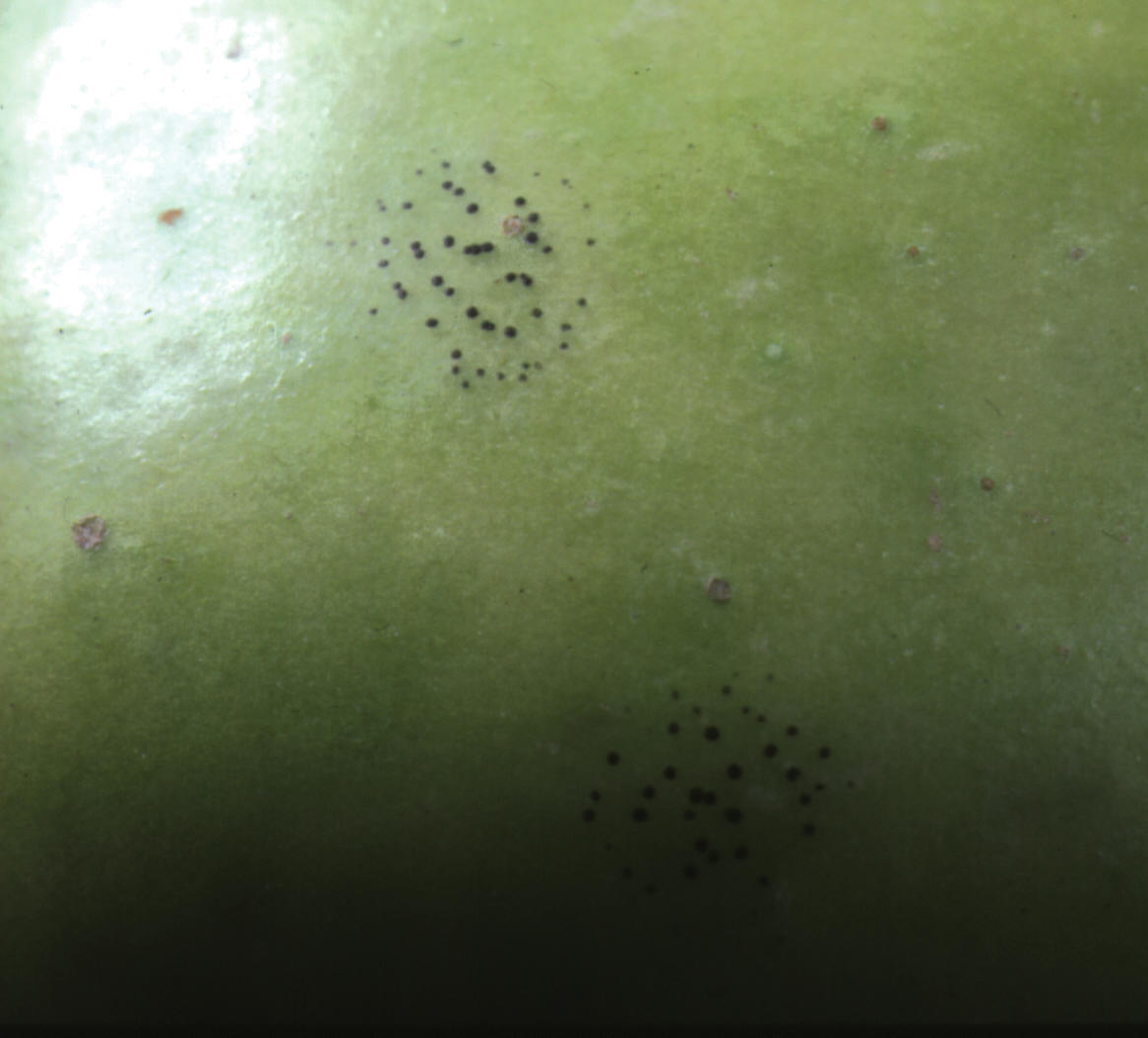In the orchard sooty blotch and fly speck are most commonly found on fruit on trees near windbreaks/hedgerows and in the shadiest part of the tree or orchard.
Sooty blotch

- Olive green to dull black sooty blotches appear on near mature fruit in the orchard, usually from late July/August onwards.
- The blotches may coalesce to cover practically the entire fruit.
- The infection is superficial and in many cases blotches can be rubbed off.
- However, if infection occurs early in the season, then the blotches are much more difficult to remove and may need bleaching.
Fly speck

- These can usually be found on the same fruits as sooty blotch and occur as groups of 6-50 or more black shiny round dots that resemble the fly excreta often found on fruits.
- Individual fly specks are clearly separated and easily distinguishable from the more diffuse blotches of sooty blotch.
- Fly speck like sooty blotch is superficial but much harder to rub off.
Other problems that may be confused with sooty blotch and fly speck
The two diseases are usually quite distinct, but sooty blotch can be confused with sooty moulds.
- The latter are caused by saprophytic fungi such as Alternaria, Cladosporium which colonise insect honey dew or other sticky deposits on fruit surfaces.
- Sooty moulds are more obvious as fluffy growth and very easily rubbed off.
